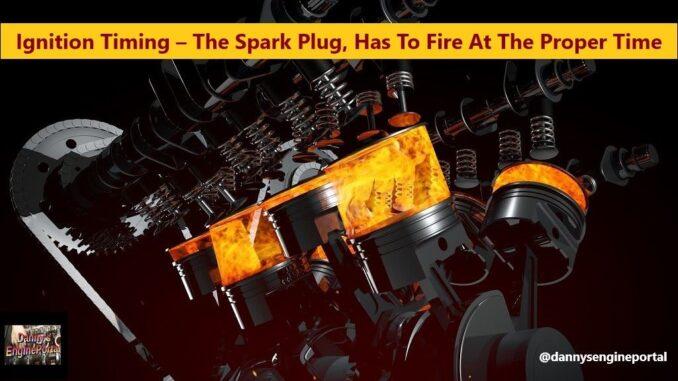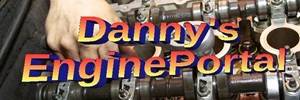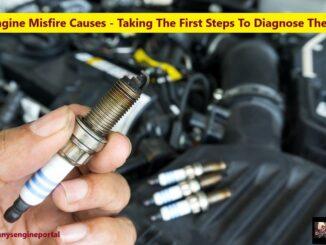
So, your engine needs proper ignition timing, to ignite the fuel at exactly the right time.
But, what happens if the ignition system fires, at the wrong time.
As a result, the air fuel mixture, will not be burned properly. So, power will fall, while fuel consumption and emissions will increase.
Subsequently, this is where proper ignition timing comes into play.
So, you start off with air, fuel, compression and spark. But, for all that to work properly, the spark plug has to fire at the proper time. Only then, will the air fuel mixture, be burn completely.
The way we measure it, is in degrees. And, this is either before or after, the piston reaches top dead center (TDC), on the compression stroke.
Consequently, This Measurement Is Better Known As, “Advanced” Or “Late” Timing:
- So, if the spark ignites the fuel, before the piston reaches top dead centre (TDC). Then, the ignition timing is said to be, “advanced”.
- However, if the spark ignites the fuel, after the piston reaches top dead centre (TDC). Then, the ignition timing is said to be, “late”.
“Advanced” Timing
Timing advance means that the spark plugs are firing earlier in the compression stroke, farther from top dead centre (TDC). The air fuel mixture in the combustion chamber, doesn’t burn right away. Advanced ignition timing might be needed, to allow time to get everything ignited.
The major benefit of advanced ignition timing is increased horsepower. Advancing the ignition timing helps raise the high-end power, while reducing the low end. It also helps get the spark past the ignition delay and runs at peak power.
“Late” Timing
Late timing causes the spark plug to fire, later in the compression stroke. The effect of “late” ignition timing is, reduced engine detonation. Which is combustion inside the cylinders, after the spark plug fires. This is also known as spark knock.
When it comes to turbocharged or supercharged engines that are running at higher levels of pressure. Then, “late” timing of the engine can be more beneficial. “Late” timing on these kinds of engines helps compensate for, denser air fuel mixtures. And, allows them to run more efficiently.
Manual, Timing
So, back in the day, most older engines had manual ignition timing. Consequently, they used either, vacuum advances or centrifugal advances, to set the right timing.
Whereas, modern engines, have an engine control unit (ECU), to dictate the setting needed, at any given engine speed.
Using A Vacuum Gauge, To Test For Wrong Timing
Wrong ignition timing, also affects manifold vacuum readings.
So, by connecting a vacuum gauge to a strong vacuum source. Lower than normal readings, could indicate wrong timing.
Computerized, Timing
Most engines today use, computerized ignition systems. The computer has a timing map, with preset spark advance values. And, is used for all combinations, of engine speed and load. Then, the computer will send a signal to the ignition coil, at the set time in the timing map.
Electronic Spark Control Module (ESC), Ignition Control Module (ICM)
Also, known as, the (ESC) or (ICM) module. This module works together with the computer. And, is used to set the ignition timing, for the best performance and efficiency.
It’s function is to “advance” the timing or make the timing “late”. So, under heavy load, it will “advance” the timing to increase power. However, at low throttle it will make the timing “late”. The module makes all these changes automatically and smoothly.
Almost, to the point where they are, virtually unnoticeable. So, the module plays an important role, in the operation of the engine. As a result, any problems with it, can cause issues with the drivability and performance in your engine.
What Can Happen With, Wrong Ignition Timing
Wrong Ignition Timing, Can Cause Several Engine Problems, Such As:
- Knocking or Pinging
- Difficult Starting
- Excessive Engine Heat
- Increased Fuel Consumption
- Reduced Power Output
Knocking or Pinging
Above all, this is one of the most common symptoms, of wrong ignition timing. In these cases, the spark fires when the engine is still in its compression phase. So, to prevent engine knocking, modern engines use knock sensors (KS).
Difficult Starting
This can be either, due to an “advanced” or “late” ignition timing. But, in both cases, the engine will not produce the optimal power. And, cause the vehicle to experience difficulty, while starting.
Excessive Engine Heat
Igniting the air fuel mixture too early, in the power stroke can cause this.
This causes the engine, to make more heat than usual.
Increased Fuel Consumption
Consequently, if the spark fires at the wrong time, it will result in poor combustion. In addition, this will also cause the fuel economy to suffer.
Reduced Power Output
If the spark fires “late”, the piston is already on the way down, generating less power and wasting fuel.
There Are Basically, Three Distinct Types, Of Ignition Systems:
- The Mechanical System ( No Electronics )
- Electronic System ( The Transition System )
- The Distributorless System (DIS) ( No Moving Parts ), Includes, The Coil On Plug System (COP)
So, As you can see, there have been great advances over the years.
In Summary: Ignition Timing
Consequently, newer engines adjust the ignition timing themselves. So, as long as all your sensors are all working properly, you won’t have to do any playing with timing. In fact, you usually can’t, unless you remap your ignition computer’s chip.
However, you can buy an aftermarket performance chip, that has a different timing map flashed into it. Be careful because, the wrong chip can not only make your car run badly.
But, it can also throw a (DTC) and bring on the dreaded, check engine light (CEL).
Thank You !!




